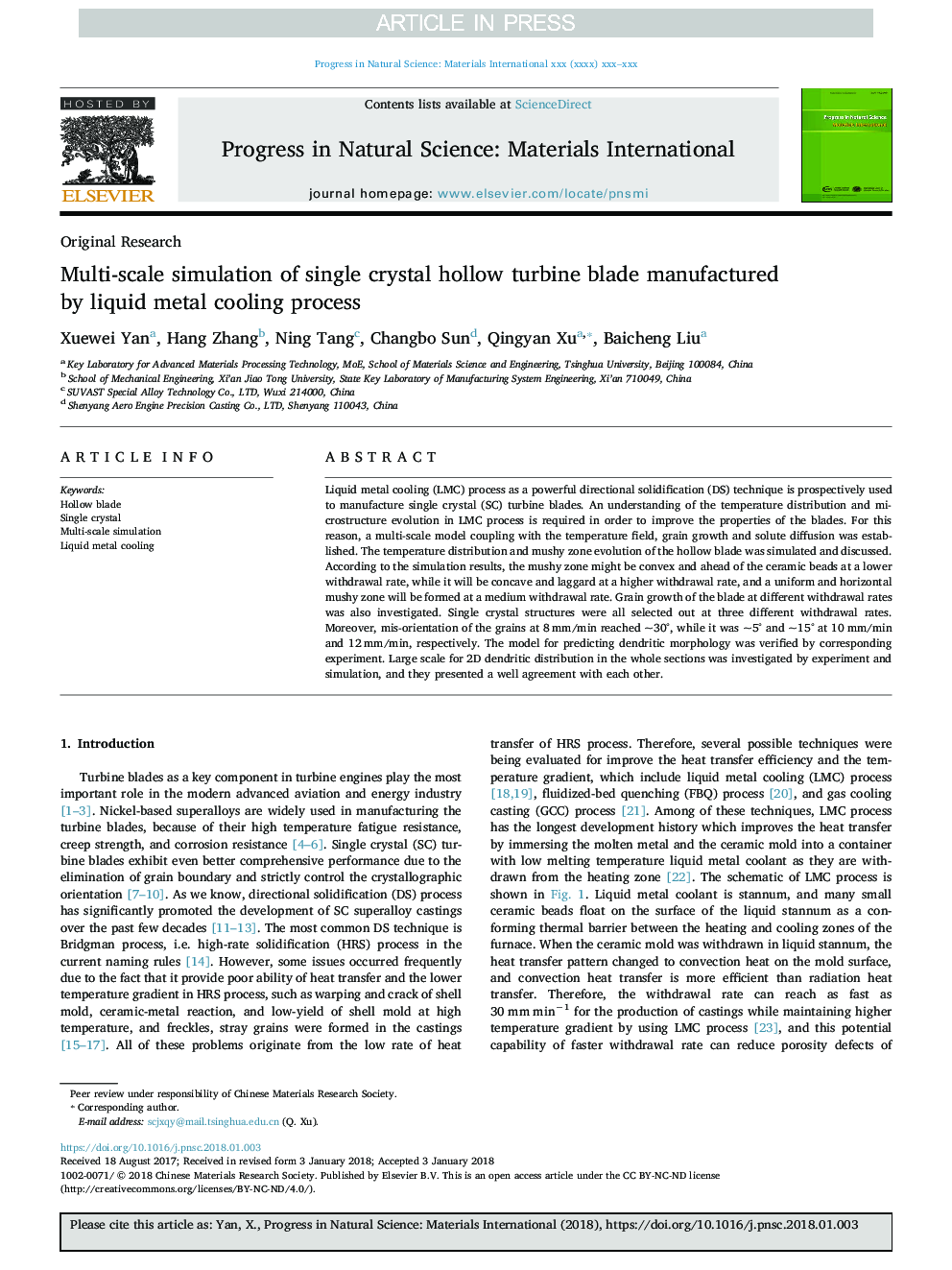| Article ID | Journal | Published Year | Pages | File Type |
|---|---|---|---|---|
| 7934777 | Progress in Natural Science: Materials International | 2018 | 7 Pages |
Abstract
Liquid metal cooling (LMC) process as a powerful directional solidification (DS) technique is prospectively used to manufacture single crystal (SC) turbine blades. An understanding of the temperature distribution and microstructure evolution in LMC process is required in order to improve the properties of the blades. For this reason, a multi-scale model coupling with the temperature field, grain growth and solute diffusion was established. The temperature distribution and mushy zone evolution of the hollow blade was simulated and discussed. According to the simulation results, the mushy zone might be convex and ahead of the ceramic beads at a lower withdrawal rate, while it will be concave and laggard at a higher withdrawal rate, and a uniform and horizontal mushy zone will be formed at a medium withdrawal rate. Grain growth of the blade at different withdrawal rates was also investigated. Single crystal structures were all selected out at three different withdrawal rates. Moreover, mis-orientation of the grains at 8â¯mm/min reached ~30°, while it was ~5° and ~15° at 10â¯mm/min and 12â¯mm/min, respectively. The model for predicting dendritic morphology was verified by corresponding experiment. Large scale for 2D dendritic distribution in the whole sections was investigated by experiment and simulation, and they presented a well agreement with each other.
Related Topics
Physical Sciences and Engineering
Materials Science
Electronic, Optical and Magnetic Materials
Authors
Xuewei Yan, Hang Zhang, Ning Tang, Changbo Sun, Qingyan Xu, Baicheng Liu,
